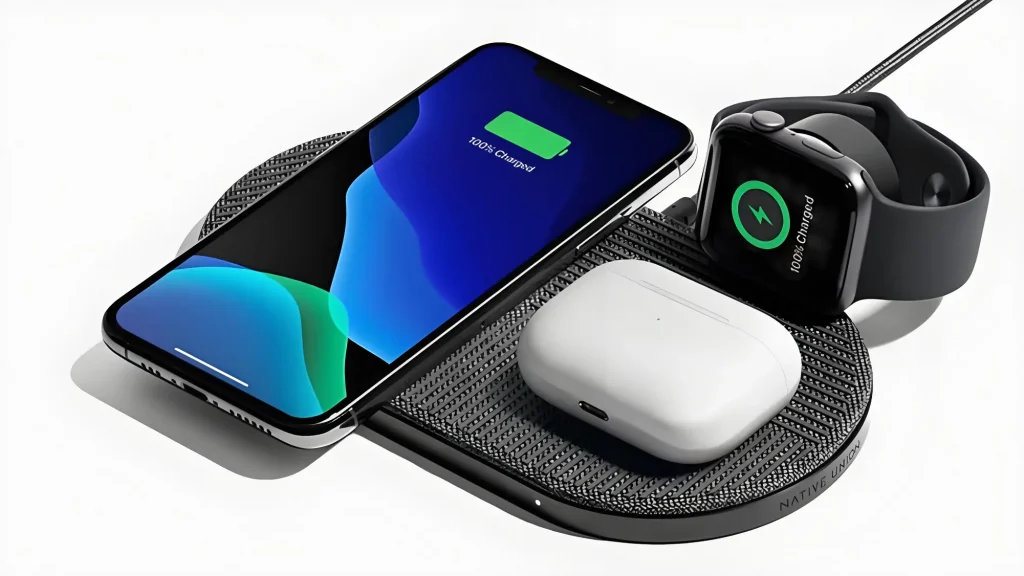- Whether opting for Apple’s official offerings or exploring third-party alternatives, prioritising safety, compatibility, and efficiency is key.
- Look for adapters with built-in surge protection and compatibility with various plug types. This ensures your adapter is versatile enough to handle the diverse European outlets.
- The standard voltage in Europe is 230V, and while the iPhone is designed to cope with these voltage differences, always check the specifications carefully before plugging other devices into European sockets.
Wondering “can I charge my iPhone with an adapter in Europe?” For iPhone users traversing the landscapes of Europe, having the right charger is not just a convenience but a necessity.
In this guide, we delve into the nuances of iPhone EU chargers, exploring their types, compatibility, features, and much more.
European power standards
The standard voltage in Europe is 230V, operating on 220-240 volts AC at a frequency of 50 Hz, these chargers are tailored to European electrical standards.
While the iPhone is designed to cope with these voltage differences, always check the specifications carefully before plugging other devices into European sockets.
Understanding EU chargers
Europe has a wide range of plug types, from the widely used Type C to the popular Type F.
Type C plugs are common in countries such as France and Germany, while Type F plugs dominate in Austria and the Netherlands. Make sure your travel adapter fits these types to fit securely into European sockets.
Research the specific plug types that are popular in the regions you will be visiting to ensure that your adapter is versatile enough for your entire European journey.
It is important to note that the UK has its unique plug type, the G-type. While many travel adapters are designed to accommodate multiple plug types, having a dedicated UK adapter ensures a secure connection in a UK socket.
Also read: What is a Tesla destination charger?
Apple’s official chargers
For those seeking reliability and seamless integration with their iPhone, Apple’s official chargers are the go-to option. Crafted specifically for Apple devices, these chargers offer unparalleled performance and safety.
Typically bundled with a detachable USB-C to Lightning cable, they provide a direct connection to your iPhone, ensuring efficient charging.

Explore the third-party options
Beyond Apple’s offerings, a plethora of third-party chargers flood the EU market, providing consumers with a myriad of choices. Choose one with multiple USB ports to accommodate all your devices at once.
Not only does this ensure European compatibility, but it also ensures you’re prepared for global travel. Look for an adapter that has built-in surge protection and is compatible with a variety of plug types.
This ensures that your adapter is versatile enough to handle different European outlets. Ensure that the charger meets EU safety standards and holds the necessary certifications to mitigate any potential risks to your device.
Power output dynamics
Understanding the power output of EU iPhone chargers is crucial for efficient charging. Standard chargers typically deliver 5 watts (5V at 1A) of power, suitable for regular charging needs.
However, for users requiring faster charging times, opting for chargers with higher power outputs, such as 18 watts (9V at 2A) or above, is essential.
Compatibility across iPhone models
Because Apple devices primarily use a USB connection, the ability to adapt to a variety of power sources is a built-in feature.
iPhone generally has a voltage range of 100V to 240V and is compatible with the European standard of 230V.
However, for users seeking fast charging capabilities, compatibility extends beyond the charger to the iPhone itself. It’s imperative to ensure that both the charger and the iPhone support fast charging functionality for optimal results.
Portability and convenience
In the realm of travel, portability is paramount. Many EU iPhone chargers feature compact designs, making them ideal companions for on-the-go charging.
Additionally, chargers equipped with folding prongs offer added convenience, facilitating easy packing and storage during travels.
Also read: How do IoT devices connect to the network?
Safety features and certifications
Prioritising safety during charging is non-negotiable. Many EU iPhone chargers come equipped with built-in safety features, including surge protection, overcurrent protection, and overheating protection.
Additionally, verifying that the charger holds the necessary certifications ensures compliance with stringent safety standards.
Availability and procurement
EU iPhone chargers are readily available across a multitude of platforms, both online and in retail stores. From Apple stores and authorised resellers to various online marketplaces, acquiring the right charger is a hassle-free endeavour.
However, exercising caution and purchasing from reputable sources is imperative to guarantee authenticity and quality.
In the realm of iPhone charging in Europe, having the right charger is paramount. Whether opting for Apple’s official offerings or exploring third-party alternatives, prioritising safety, compatibility, and efficiency is key.
With a myriad of options available, selecting the perfect EU iPhone charger ensures uninterrupted power for your device, keeping you connected and empowered on your European adventures.

